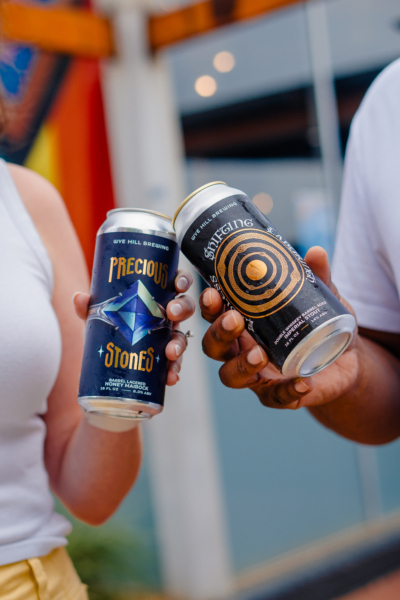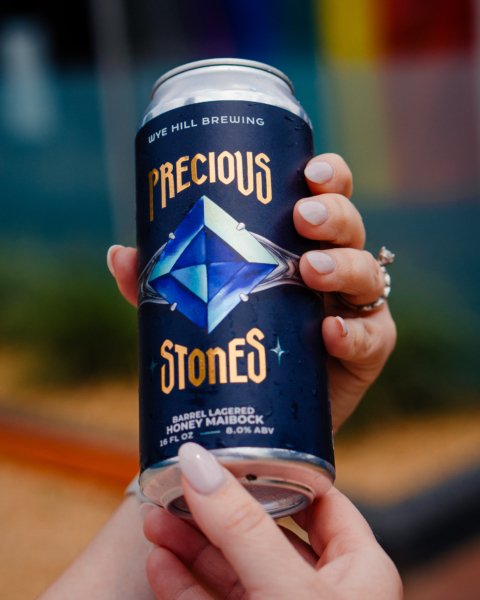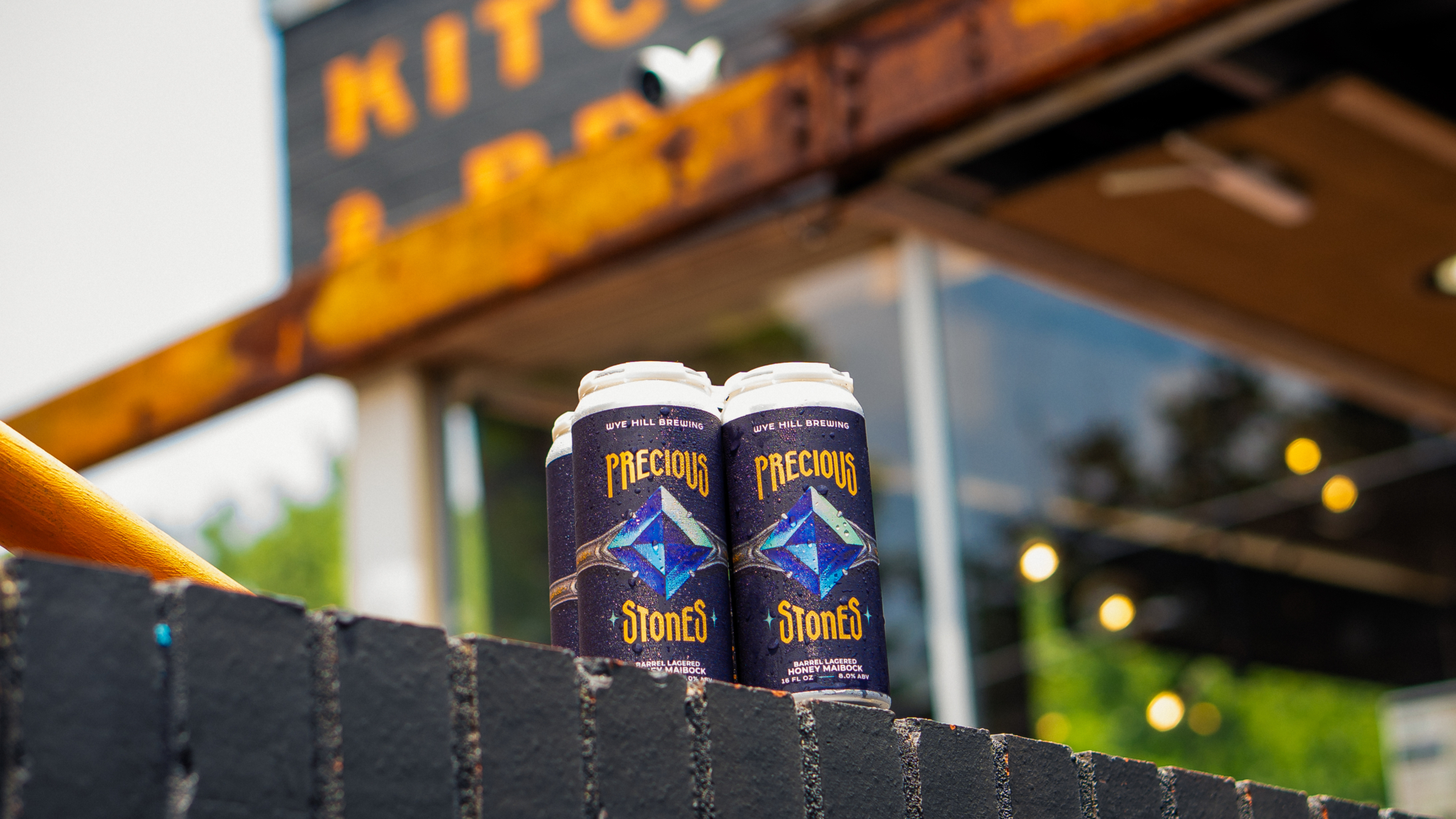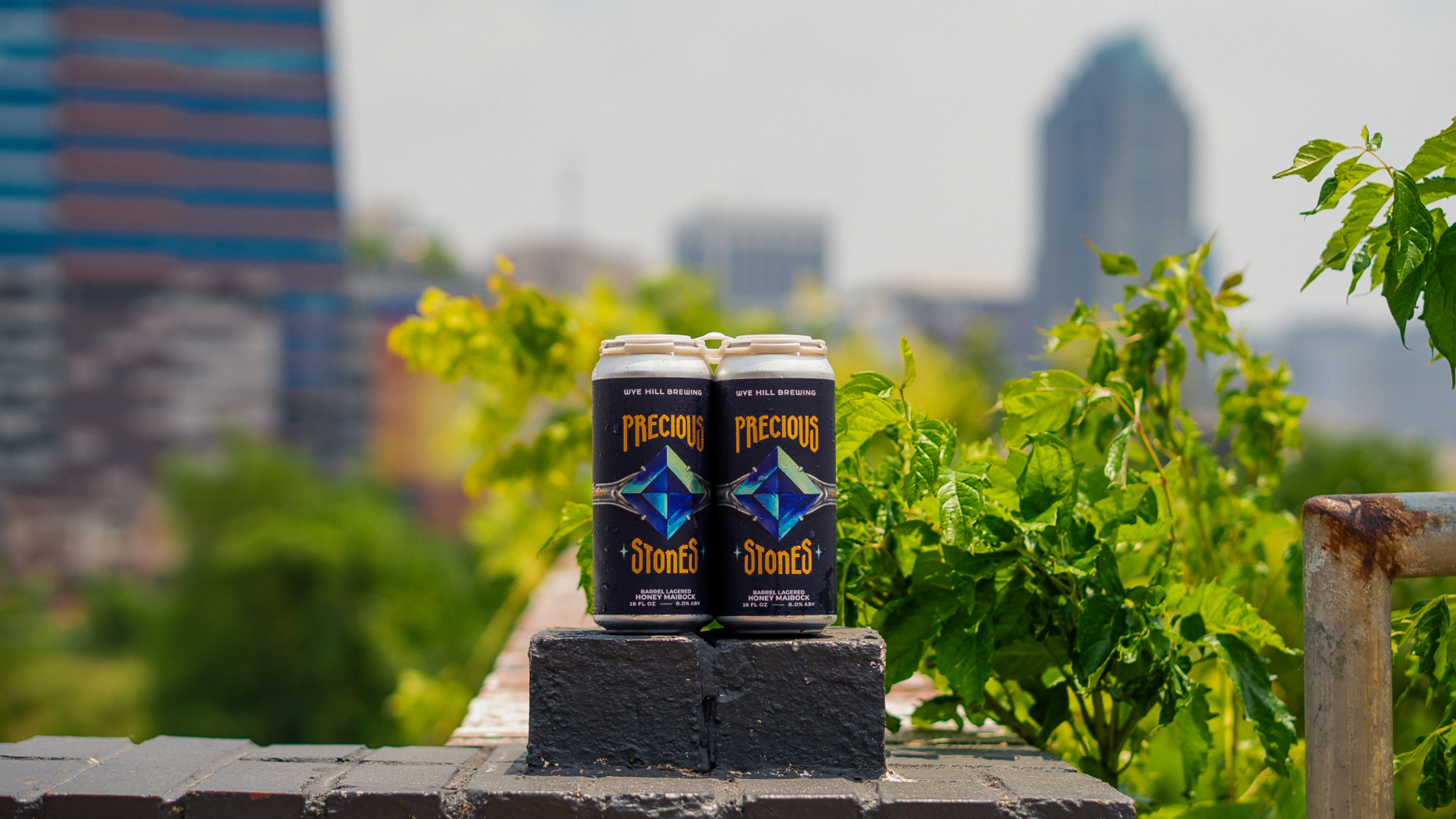with this year’s anniversary brew, we are treading some uncharted waters
Last month, we celebrated four years atop our beloved hill. It has been a time rife with adaptation, evolution and opportunity– especially when it comes to the progress of our brewing program. Four years later, we have the means/space to match the huge (brewing) heart that has always existed within the walls of Wye.
Anniversary beers are fairly customary in the craft brewing industry. A barrel lagered honey Maibock, however, isn’t exactly customary. The go-to celebratory choices at a lot of breweries are typically a lot more… well… normal. And, as far as we are concerned, normal is kinda boring.
Thus, Precious Stones was born.
LEAVE NO STONE UNTURNED
 Traditionally, a Maibock is a strong, malty German lager. They have big flavors that are usually bready, buscuity and caramelly in nature. Being inspired by the recent popularity of lagers (but, never wanting to take the easy way out), our brewers got a little funky with the creation of Precious Stones.
Traditionally, a Maibock is a strong, malty German lager. They have big flavors that are usually bready, buscuity and caramelly in nature. Being inspired by the recent popularity of lagers (but, never wanting to take the easy way out), our brewers got a little funky with the creation of Precious Stones.
“Lagers are becoming much more popular in the last few years,” said Director of Brewing Operations Greg Winget. “And, as a result, there are people using some different techniques with them. Specifically, there’s a lot of wood aging going on in lagering.”
Greg, Nick and Owen are by no means strangers to barrel aging. Most recently, they’ve used bourbon or rum barrels in the creation of Nothing Stirs, Endless Shifting Labyrinth and Manticore(s). Lagering in barrels, however, is a different story. Doing so in wine and mead barrels is almost unheard of in the brewing universe.
Foeders are being used a great deal as a way to incorporate wood into lagering. The Dutch word for ‘vat,’ a foeder is a large, horizontal or vertical oak barrel. You can fit an entire batch in one, and it can be reused again and again. This got Greg thinking, because of how similar they are to the stainless steel tanks utilized in brewing systems.
Where you can control the internal temperature of a foeder, the typical smaller barrels used in aging are subjected to ambient temperature. Greg began considering how he could use our limited space to create a similar effect. He thought to utilize the brewery walk-ins to store barrels. And, he wanted those barrels to be extra unique.
WHERE THERE’S WOOD, THERE’S A WAY
Greg reached out to good friend and winemaker Erick Hurtado, of FireClay Cellars and Haw River Farmhouse Ales. Through Erick, the brewers borrowed two estate-grown Chambourcin wine barrels and one used to age a honeyed mead. The Maibock lagered in the barrels in our walk-ins for eight weeks, then the contents were drained and combined, and the barrels were given back.
“That’s kind of a unique element of collaboration, where we’re literally using some of the equipment they use to make wine to make beer, which is kind of fun,” Greg said.
In terms of how the science of the brewing process is changed by lagering in wood versus stainless steel, it’s all about the wood.
“The most important thing that it does is extract flavors from the wood, so you get tannins like you have in wine. So, really mild, woody bitter notes. Then you get vanillins (vanilla flavor) that’s just from the oak,” Greg said. “You’re also getting the vestiges of flavor from whatever was in the barrel before. So, there are some mead notes and some wine notes.”

Greg was also surprised by how much oak flavor they were able to get in such a short period of time, because generally it takes a long time to extract them. Also, flavor extraction always happens faster at higher temperatures, so the effect was significant, considering the short period of time that the barrels were lagering in the (cold) walk-in.
The horizontal orientation of the barrels also aided in the lagering process.
“One of the main goals of lagering is to produce clear beer. So, you want all of the heavy particulates– the hops and yeast of whatever proteins remaining from malt– to drop out to the very bottom through gravity, time and temperature,” Greg said. “If you think about the geometry of a beer tank, which is vertical, you get more dropout with additional surface area at the bottom. Traditional lagering tanks are horizontally aligned. It’s just a cylinder that’s turned on its side. So, if you think about lagering in a barrel, it’s basically just a smaller version of that.”
Strong lagers usually take longer to clear up in the lagering process, because there’s more yeast in suspension. Precious Gemstones was proof of concept, because it cleared up super fast (it was almost 100% clear a month in). This was way quicker than it would in a stainless steel brewing system. Which makes the lagering process more efficient. And, has influenced the brewers to utilize this method going forward.
A lot of previously unexplored variables went into the making of this absolute gem. Pleasantly surprising and extremely meaningful, as it represents the experimental leaps and bounds we’ve been able to make as a small-scale brewery in such a short amount of time.
Here’s to all of the beautiful beer things the next four years have in store. We’ll see you there.

